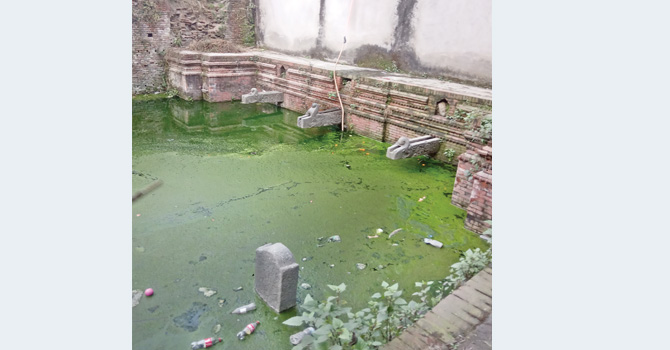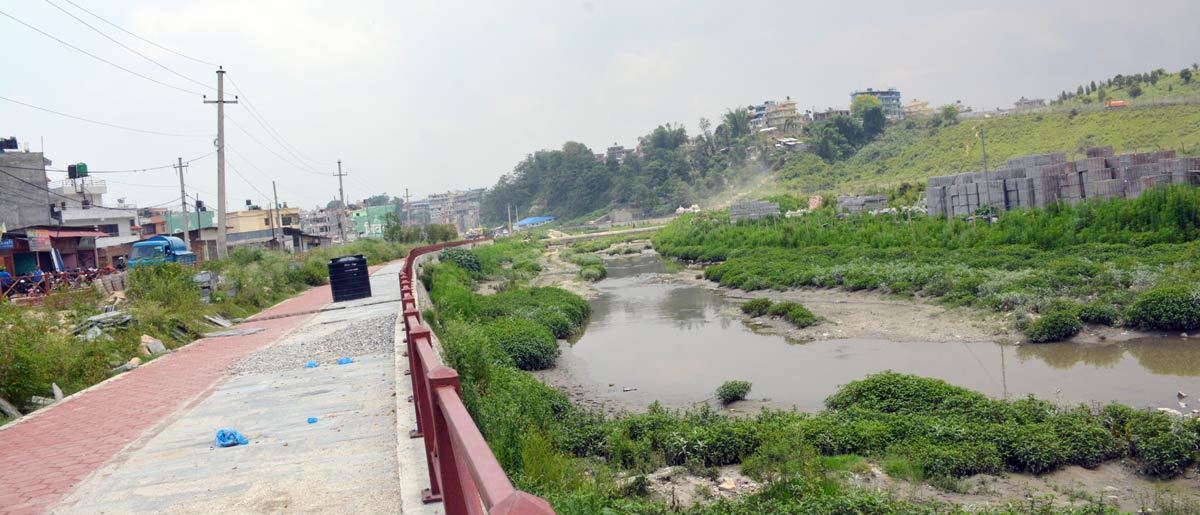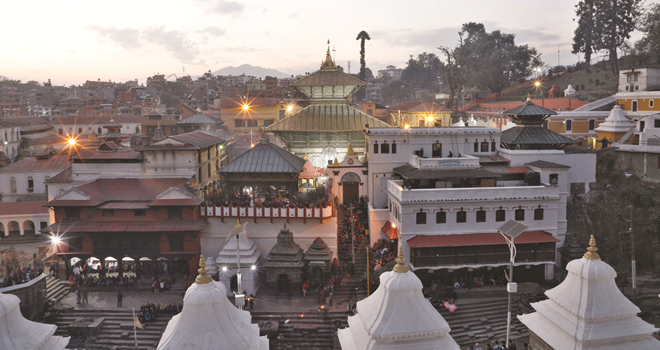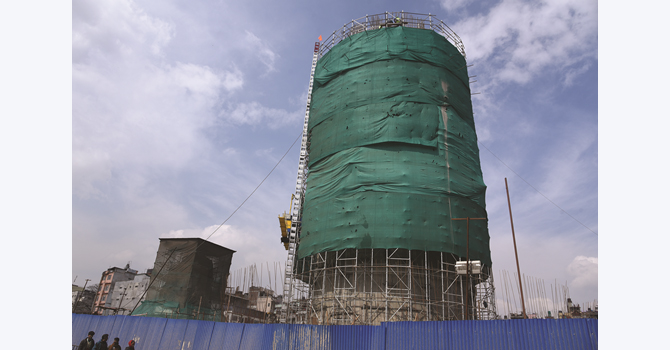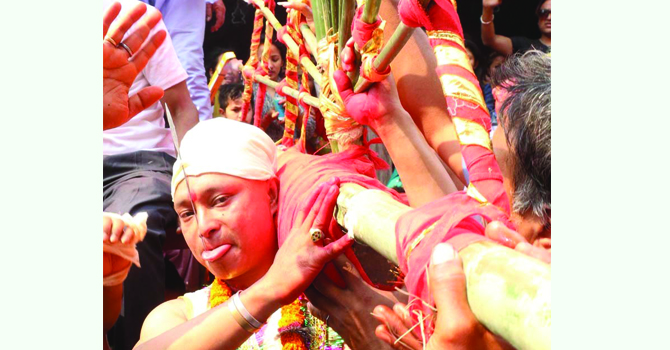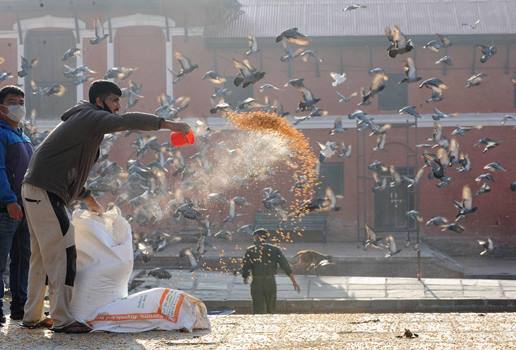Book with records of lost and forgotten facts, heritages about Pashupatinath launched
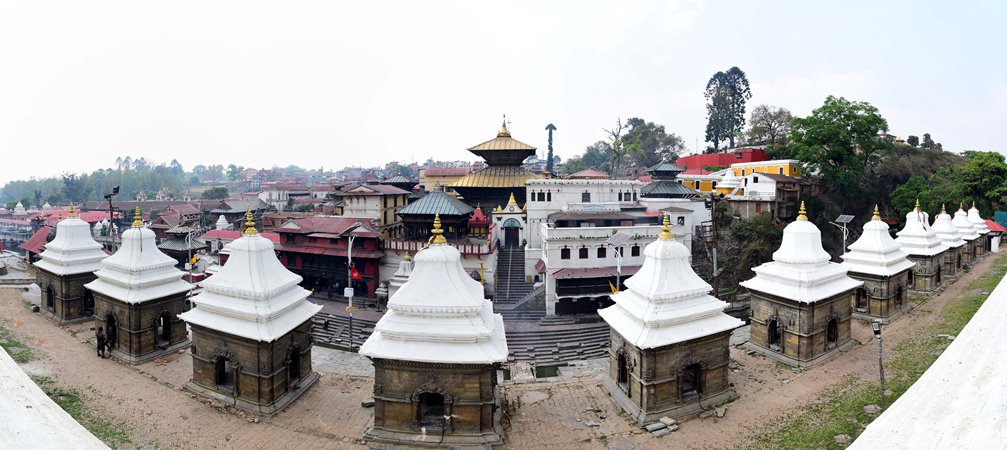
By Binu Shrestha
Kathmandu, Dec. 6: Some culturally significant artefacts -- tangible and intangible -- in and around the Pashupatinath Temple have disappeared, while others are on the verge of collapse , because of various reasons, including financial constraints, modernisation and changing lifestyles, a newly launched book says.
The sacred Hindu Temple is not only rich in artefacts, like shrines and idols, but is also an embodiment of the legacy of dozens of age-old festivals and rituals.
After researching the temple’s abstract and concrete domains of significance, Pashupati Area Development Trust (PADT), in collaboration with Central Department of Archaeology and Culture of Tribhuvan University, has unveiled a book titled “Pashupati Areas’ Cultural Heritage."
Dr. Pradeep Dhakal, member-secretary of Pashupati Area Development Trust (PADT), said that there was a lack of proper inventory system recording Pashupatinath’s many rituals and practices, and that all of them had now been studied and made available for reference for the long-term planning of Pashupati area.
With the book’s publication, the trust is hopeful that it would help shed a new light on some of the hidden or unknown cultural heritages, making them known to all.
While several cultural heritages signifying Pashupatinath had disappeared long ago, others -- which are in dilapidated conditions -- await renovation as well as preservation.
It is said that sets of nine shrines surround the temple keeping it at the centre -- casts, doors, Bhairavs, stone taps, wells, ponds, Durgas, dabalis, paths, nritynaths and chariots.
With the unbridled growth of urbanisation along with modernisation, the existence of such groups is hard to fully determine, if not impossible. Only tiny portions of those groups are extant, according to the book, said Dr. Milan Kumar Thapa, treasurer of PADT.
He said that visitors were denied access to several cultural heritages because they now fall under private property.
Encroached, the centuries-old Shivalingas have now been placed on the premises of people’s houses, which are located at Pachu and Dadhu toles.
While four ancient Shivalingas are found in a single house, other cultural heritages lie in the private boundaries and are in a state of decay, according to the book.
Further, the book reveals that several festivals and rituals, like Linga Yatra, Upalinga Yatra, Kunda Yatra and Bankali Yatra, used to be practiced until few decades ago but no more.
Bankali Yatra, which was revived in 2058 BS after a long hiatus, has now gone out of practice. Given new lease of life in 2075 BS, it was performed twice a year until 2076.
Trishul Jatra, Ganga Mai Jatra, Khadag Jatra, Chandra Binayak and Bhairav Jatra, Guheshwori Jatra, Nava Durga Dance, Bhimsen Jatra are some other major jatras celebrated during different occasions.
However, many of these age-old traditions are gradually losing their lustre, resulting in their disappearance.
“Our effort is to revive the cultural practices that are increasingly forgotten,” said treasurer Thapa.
The book, first-of-its-kind for PADT, recounts the endangered and lesser known facts of and about the holy place, said Thapa, adding that other information which is not mentioned in the book would be brought to light in later editions.
Recent News

Do not make expressions casting dout on election: EC
14 Apr, 2022
CM Bhatta says may New Year 2079 BS inspire positive thinking
14 Apr, 2022
Three new cases, 44 recoveries in 24 hours
14 Apr, 2022
689 climbers of 84 teams so far acquire permits for climbing various peaks this spring season
14 Apr, 2022
How the rising cost of living crisis is impacting Nepal
14 Apr, 2022
US military confirms an interstellar meteor collided with Earth
14 Apr, 2022
Valneva Covid vaccine approved for use in UK
14 Apr, 2022
Chair Prachanda highlights need of unity among Maoist, Communist forces
14 Apr, 2022
Ranbir Kapoor and Alia Bhatt: Bollywood toasts star couple on wedding
14 Apr, 2022
President Bhandari confers decorations (Photo Feature)
14 Apr, 2022


